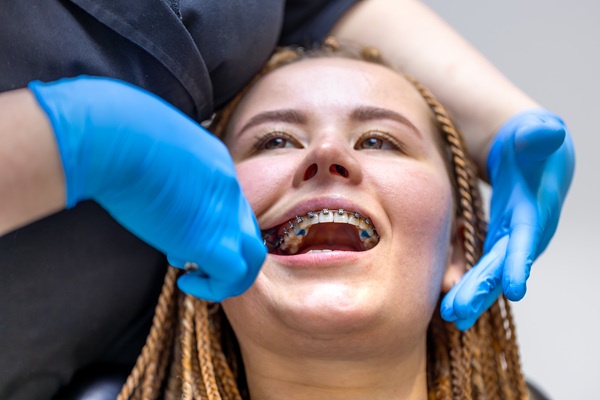While tooth extractions are a common dental procedure, not everyone is familiar with the potential complication that can arise afterwards – dry socket. Often characterised by intense pain, this condition can catch patients off guard, turning what should be a straightforward recovery into a challenging experience. Join us as we explore the intricacies of a dry socket, uncovering the reasons behind its occurrence, identifying its symptoms, and providing practical tips to avoid falling victim to this post-extraction woe.
What is a Dry Socket?
Dry socket, scientifically known as alveolar osteitis, is a dental condition that can occur after tooth extraction. Contrary to what the name might suggest, it doesn’t involve the socket becoming “dry,” but rather, it’s a result of the normal blood clot that forms after an extraction, being dislodged or dissolving prematurely. This blood clot plays an essential role in the healing process as it protects the underlying bone and nerves, facilitating the formation of new tissue. When this protective clot is compromised, it exposes the bone and nerves to air, food particles, and bacteria, leading to heightened sensitivity and intense pain.
Imagine the blood clot as a natural bandage for the extraction site. If this bandage is removed or disrupted, it leaves the wound vulnerable to external elements, delaying the healing process and causing discomfort. A dry socket is more common after the extraction of lower wisdom teeth, but it can occur with any tooth removal.
Related: Tooth Extraction: Types and Recovery Techniques
What Causes Dry Socket?
Several factors contribute to the development of dry socket, disrupting the normal healing process of the extraction site. These may include:
Poor Oral Hygiene
Inadequate cleaning of the mouth after the extraction can lead to infection, which may interfere with the formation of the blood clot.
Smoking
Smoking and tobacco use increase the risk of dry socket by constricting blood vessels, reducing blood supply to the extraction site, and impeding the formation and stability of the essential blood clot needed for proper healing.
Trauma During Extraction
How a tooth is extracted can influence the likelihood of dry socket. If the extraction process involves excessive force or is particularly challenging, it may lead to trauma at the extraction site. This trauma increases the risk of the blood clot being dislodged, contributing to the development of a dry socket.
Swishing Vigourously
Swishing or rinsing your mouth too vigorously in the initial days post-extraction can be problematic. The force generated during vigorous swishing may dislodge the blood clot from the extraction site.
Using a Straw
Sipping liquids through a straw might seem like a harmless activity, but it can potentially contribute to the development of dry socket. The suction created while using a straw can exert pressure on the blood clot, leading to its dislodgment or dissolution.
Birth Control Pills
Some studies suggest that hormonal factors, such as the use of birth control pills, may increase the risk of a dry socket.
Pre-Existing Infection
If the tooth being extracted is already infected, the risk of dry socket may be higher. Infections compromise the health of the surrounding tissues, making it more challenging for the extraction site to heal properly.
Dry Socket Symptoms
While some level of discomfort is considered normal following a tooth extraction, the pain associated with dry socket transcends the expected post-operative unease. You may experience:
- Intense, Throbbing Pain: Dry socket is characterised by severe, throbbing pain that often radiates from the extraction site to the surrounding areas, such as the ear or jaw.
- Delayed Onset of Pain: The pain associated with dry socket becomes noticeable a few days after the extraction, peaking around 2 to 4 days post-procedure.
- Foul Odour or Taste: An unpleasant taste or odour may emanate from the extraction site due to the lack of a protective blood clot and potential bacterial infection.
- Fever: Some individuals with dry socket may experience a slight fever, indicating a systemic response to the compromised healing at the extraction site.
If you experience symptoms beyond the usual post-extraction discomfort, particularly severe and unrelenting pain, contact your dentist promptly. Early identification of dry socket allows for appropriate intervention to manage pain and facilitate a smoother recovery.
How to Prevent Dry Socket?
Preventing dry socket involves a combination of careful post-operative care and lifestyle adjustments. Here are some tips to minimise the risk of this uncomfortable condition after a tooth extraction:
- Follow Post-Operative Care Instructions
Adhere to the specific post-operative care instructions provided by your dentist, including guidelines for oral hygiene, diet, and medication. These instructions are designed to promote proper healing and reduce the risk of complications.
- Avoid Vigorous Swishing
Refrain from vigorous swishing or rinsing of the mouth in the initial days following the extraction. Gentle rinsing with a prescribed mouthwash or saline solution is recommended to prevent disruption of the blood clot.
- Say No to Straws
In the days following a tooth extraction, opt for drinking liquids directly from a cup rather than through a straw. This minimises the risk of creating suction forces that could disturb the blood clot and helps ensure a smoother healing process.
- Quit Smoking and Tobacco Use
If you smoke or use tobacco products, consider quitting or at least refrain from these habits during the crucial post-extraction healing period. Tobacco use is a significant risk factor for dry socket due to its adverse effects on blood clot formation and healing.
- Maintain Good Oral Hygiene
Follow gentle oral hygiene practices as advised by your dentist. Be cautious while brushing near the extraction site to avoid disrupting the blood clot. Keeping the area clean reduces the risk of infection.
- Consume Soft Foods
Opt for a soft and non-irritating diet in the days following the extraction. Avoid hot, spicy, or crunchy foods that may pose a risk of dislodging the blood clot.
Also read our blog: When Can I Resume Normal Activities After Tooth Extraction?
Experience Gentle Tooth Extractions with Your Bellevue Hill Dentist
At Bellevue Hill Dental, we understand that preserving your natural teeth is a top priority. However, there are instances when tooth extractions become necessary for the sake of your oral health and comfort. Whether you’re dealing with a troublesome wisdom tooth or facing extensive decay necessitating extraction, our compassionate dentists are here to provide gentle and personalised care. From the initial evaluation to the delicate extraction procedure and thorough post-operative care, we prioritise your comfort and well-being every step of the way. Book a consultation with us and set out on a path to a healthier, pain-free smile.



